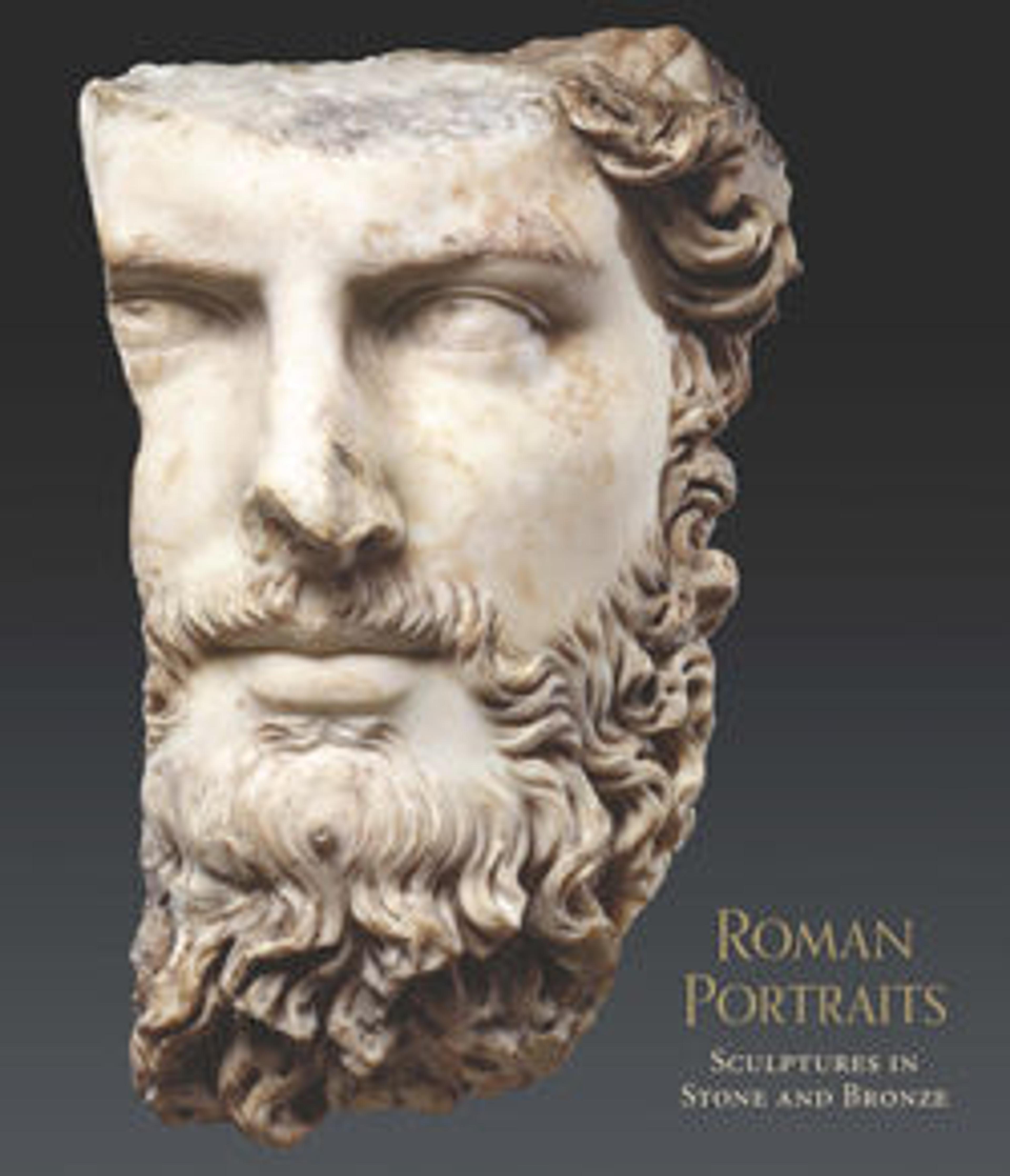Marble head of a Greek general
Copy of a Greek bronze statue of the middle of the 4th century B.C.
This powerful portrayal of a man of action belongs to a type popular in Roman times. One suggestion for his identity is the strategos (general) Phokion, pupil of Plato and one of the foremost Athenian statesmen of the fourth century B.C., but there is little evidence to support that theory. We do not know if the original statue was a contemporary portrait, like the famous fifth-century portrait of the Athenian statesman and general Perikles, or a posthumous work. It could even be a representation of a hero from the mythic past. He wears a Corinthian helmet pushed up and resting on the back of his head. The helmet is elaborately decorated in relief with griffins on the bowl and rams’ heads on the cheek pieces and is similar to a type worn by the goddess Athena. His eyes would have been inlaid in another material. The head has been worked for insertion into a statue.
This powerful portrayal of a man of action belongs to a type popular in Roman times. One suggestion for his identity is the strategos (general) Phokion, pupil of Plato and one of the foremost Athenian statesmen of the fourth century B.C., but there is little evidence to support that theory. We do not know if the original statue was a contemporary portrait, like the famous fifth-century portrait of the Athenian statesman and general Perikles, or a posthumous work. It could even be a representation of a hero from the mythic past. He wears a Corinthian helmet pushed up and resting on the back of his head. The helmet is elaborately decorated in relief with griffins on the bowl and rams’ heads on the cheek pieces and is similar to a type worn by the goddess Athena. His eyes would have been inlaid in another material. The head has been worked for insertion into a statue.
Artwork Details
- Title: Marble head of a Greek general
- Period: Imperial
- Date: 1st–2nd century CE
- Culture: Roman
- Medium: Marble, Pentelic ?
- Dimensions: 19 1/8 in. (48.6 cm)
- Classification: Stone Sculpture
- Credit Line: Fletcher Fund, 1924
- Object Number: 24.97.32
- Curatorial Department: Greek and Roman Art
More Artwork
Research Resources
The Met provides unparalleled resources for research and welcomes an international community of students and scholars. The Met's Open Access API is where creators and researchers can connect to the The Met collection. Open Access data and public domain images are available for unrestricted commercial and noncommercial use without permission or fee.
To request images under copyright and other restrictions, please use this Image Request form.
Feedback
We continue to research and examine historical and cultural context for objects in The Met collection. If you have comments or questions about this object record, please contact us using the form below. The Museum looks forward to receiving your comments.
